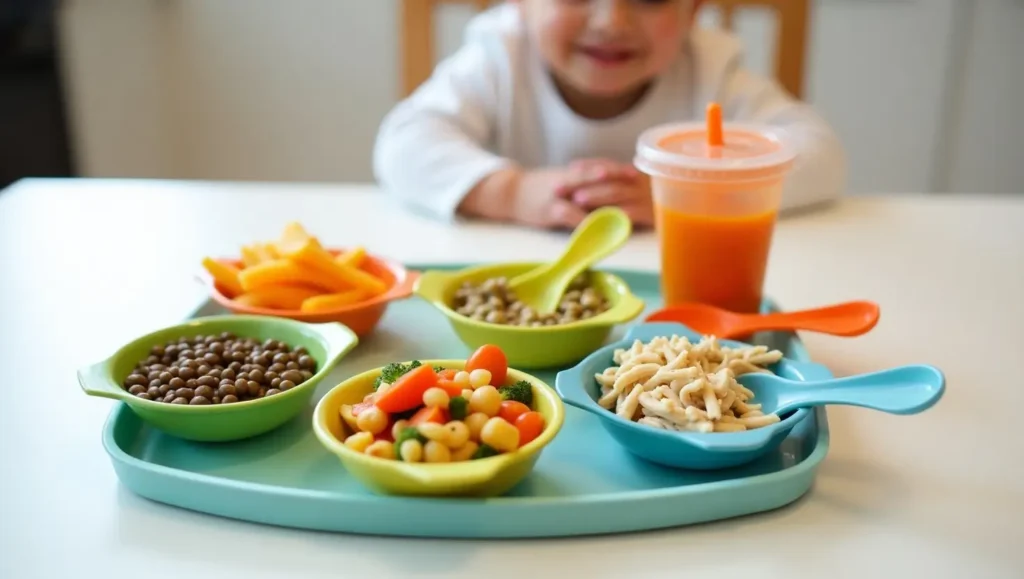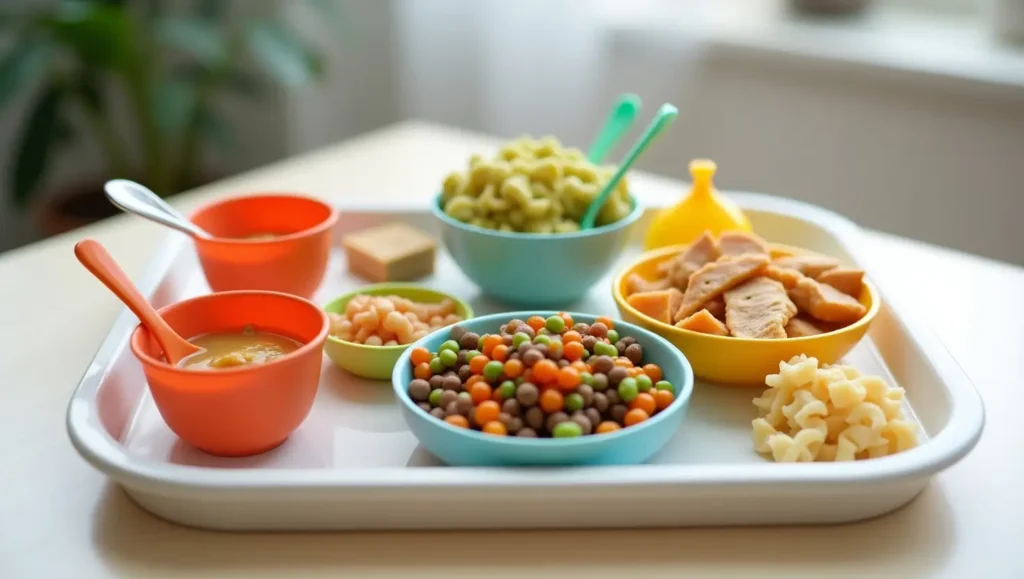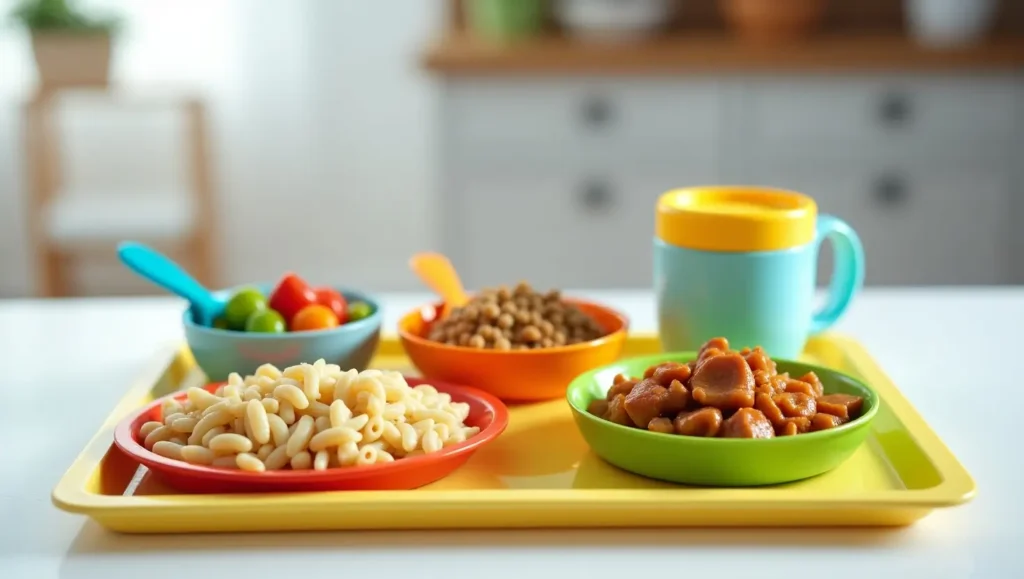
Stage 3 Baby Food
Table of Contents
Definition and Purpose
Stage 3 baby food represents a critical transitional phase in infant feeding, tailored for babies who have already mastered the basics of pureed foods and are ready for more texture and complexity. Unlike Stage 1 (single-ingredient purees) and Stage 2 Baby Food (combination purees with smoother textures), Stage 3 introduces thicker, chunkier purees, soft lumps, and even finely minced solids. The primary goal is to support the development of chewing skills, oral motor coordination, and exposure to a wider variety of flavors and nutrients.
At this stage, foods are often mashed with a fork rather than completely pureed, incorporating small, soft bits that encourage babies to practice moving food from the front to the back of the mouth. This paves the way for a smoother transition to table foods by around 10–12 months.
Stage 3 Baby Food: What Age Is It For?
Parents often ask, “stage 3 baby food what age is it for?” Generally, Stage 3 is appropriate for babies 8–10 months old, though individual readiness can vary. Look for these developmental milestones:
- Sitting steadily without support
- Good head and neck control
- Ability to pick up and bring objects to mouth (pincer grasp emerging)
- Interest in finger foods and chewing motions

If your little one meets these milestones but still gags on lumps, continue a bit longer with Stage 2 textures and revisit Stage 3 in a few weeks. Always consult your pediatrician if you have concerns about readiness or allergies.
Nutritional Composition of Stage 3 Baby Foods
Stage 3 baby foods should deliver a balanced mix of macronutrients and micronutrients, supporting rapid growth and brain development. Below is a typical nutritional profile per 100 g of a mixed vegetable and chicken mash:
| Nutrient | Amount per 100 g |
|---|---|
| Calories | 60 kcal |
| Protein | 2.5 g |
| Fat | 2.2 g |
| Carbohydrates | 7.5 g |
| Fiber | 1.8 g |
| Iron | 1.2 mg |
| Zinc | 0.8 mg |
| Vitamin A | 150 µg RAE |
| Vitamin C | 12 mg |
| Calcium | 35 mg |
Key considerations:
- Iron & Zinc: Essential for cognitive development; look for meats and fortified cereals.
- Healthy Fats: Support brain and eye development; include mashed avocado, full-fat yogurt.
- Fiber: Gentle introduction to support gut health; sources include pear, sweet potato.
For more on overall feeding needs in the first year, see our guide on Nutritional Requirements for Babies 0-12 Months.

Stage 4 Baby Food
Stage 4 baby food marks the final step in the baby food journey before full transition to table foods, typically suited for babies 12 months and older. At this stage, babies are ready to eat most of the same foods as the rest of the family, just prepared in soft, bite-sized portions to prevent choking. Stage 4 foods include chopped fruits, cooked vegetables, shredded meats, small pasta, and dairy products like cheese and yogurt. This phase emphasizes self-feeding, pincer grasp development, and continued exploration of textures and flavors. As your child’s appetite and independence grow, Stage 4 supports a balanced diet and smoother transition to toddler meals.
Comparing Stage 3 and Stage 4 Baby Food
As your baby approaches 10–12 months, they’ll be ready for Stage 4 baby food, which is close to family-style meals, finely chopped or minced with minimal pureeing. Below is a side-by-side comparison:
| Feature | Stage 3 Baby Food | Stage 4 Baby Food |
|---|---|---|
| Texture | Chunky purees; small soft lumps | Finely minced/table foods; soft pieces |
| Age Range | 8–10 months | 10–12+ months |
| Skills Encouraged | Chewing motions; tongue coordination | Self-feeding; advanced chewing; pincer grasp |
| Typical Ingredients | Mashed fruits, veggies, meats, legumes | Soft chopped meats, pasta, rice, cooked veggies |
| Finger Food Options | Minimal chunks; more spoon feeding | Encourages more finger foods and self-feeding |
While stage 3 baby food what age is mainly 8–10 months, stage 4 baby food caters to 10–12 months and beyond, easing the transition to regular family meals.

Preparing and Introducing Stage 3 Baby Foods Safely
Safety and gradual introduction are paramount when advancing textures. Follow these guidelines:
- Start Slow
- Introduce one new Stage 3 food at a time.
- Wait 3–5 days between new foods to monitor for reactions.
- Consistency Tips
- Mash with a fork, leaving small discernible pieces.
- If chunks are too large, add a splash of breast milk/formula to soften.
- Allergy Awareness
- Continue to expand allergenic foods if previously tolerated (e.g., egg, dairy, nut butters).
- Watch for rash, vomiting, or diarrhea; consult a healthcare provider if concerned.
- Self-Feeding Encouragement
- Offer soft sticks (steamed carrot, zucchini).
- Provide a baby-safe spoon and let your baby attempt to feed.
- Hygiene and Storage
- Prepare fresh batches; store leftovers in sealed containers for ≤24 h in the fridge.
- Discard foods that have been at room temperature >2 h.
By following these steps—and gradually moving toward Stage 2 Baby Food textures before—your baby will develop strong chewing skills, enjoy a variety of flavors, and be well-prepared for Stage 4 and beyond.